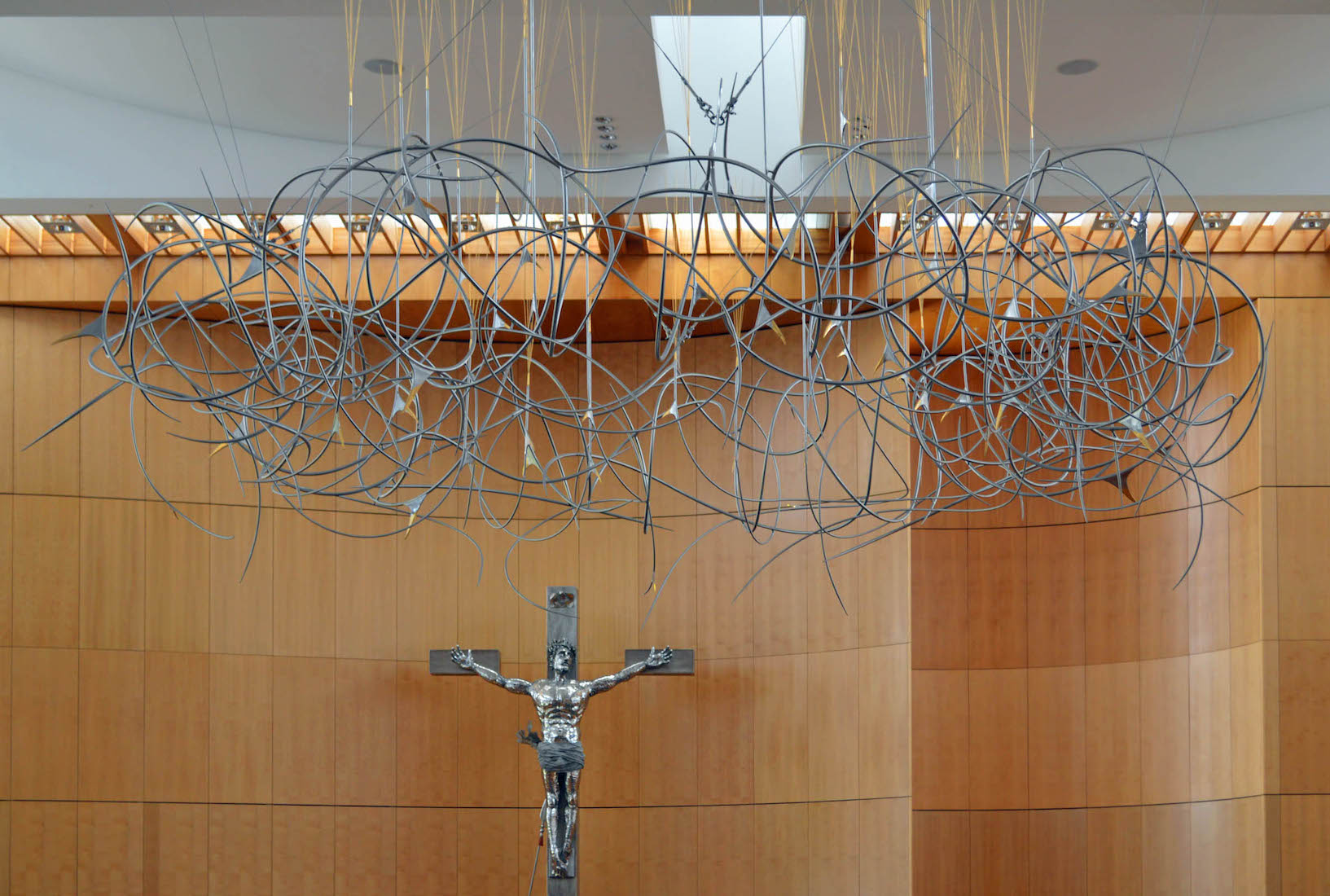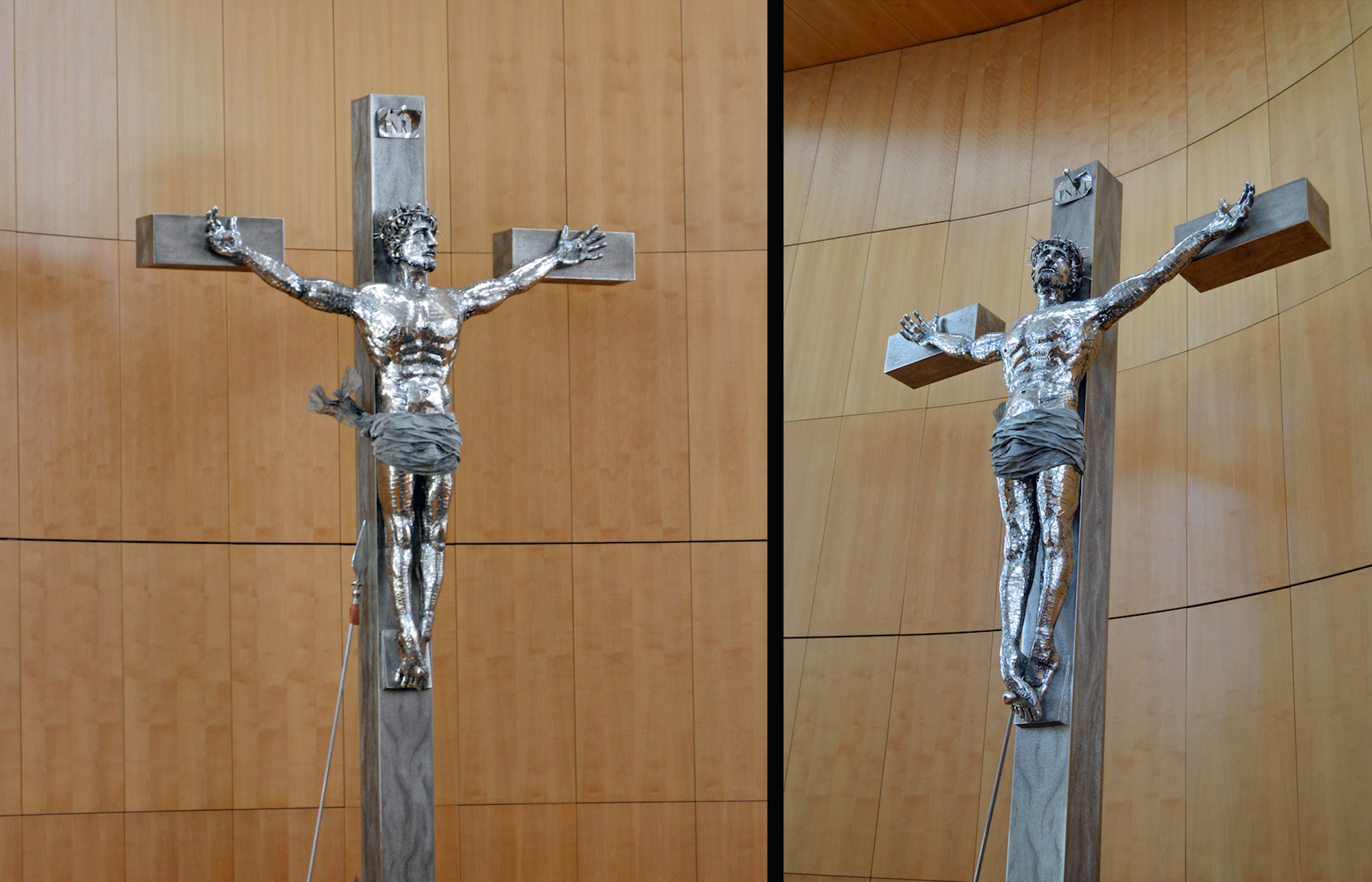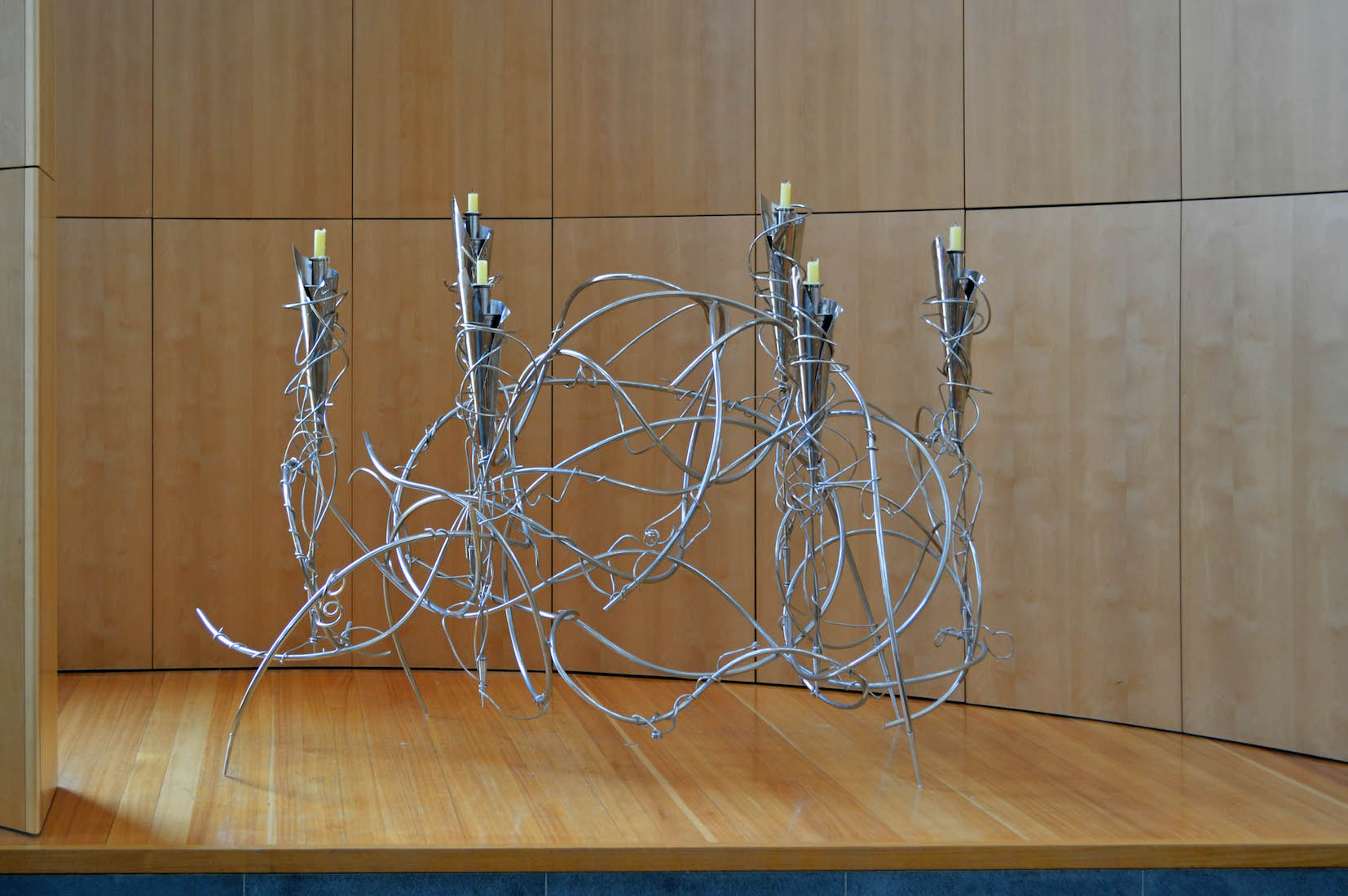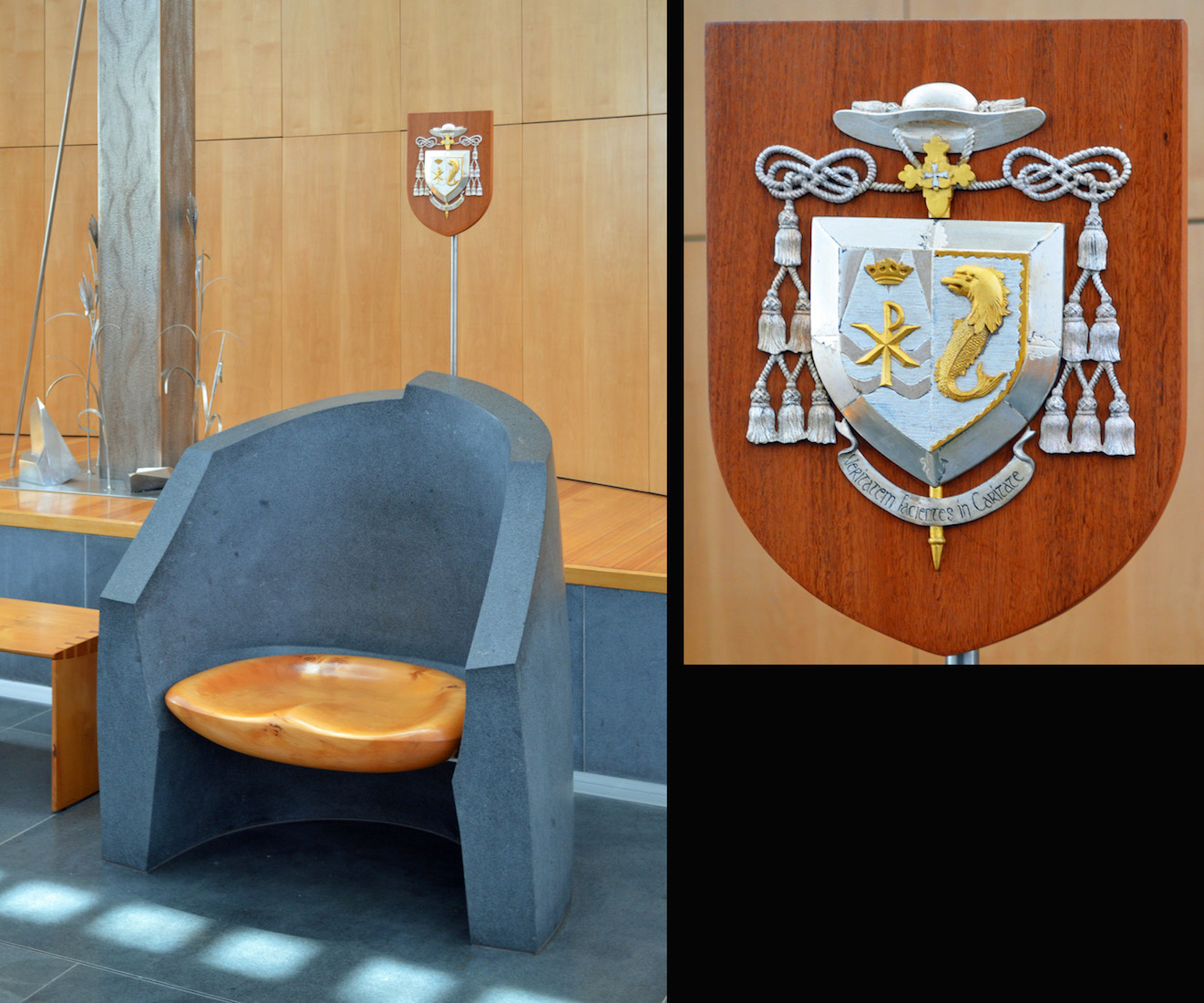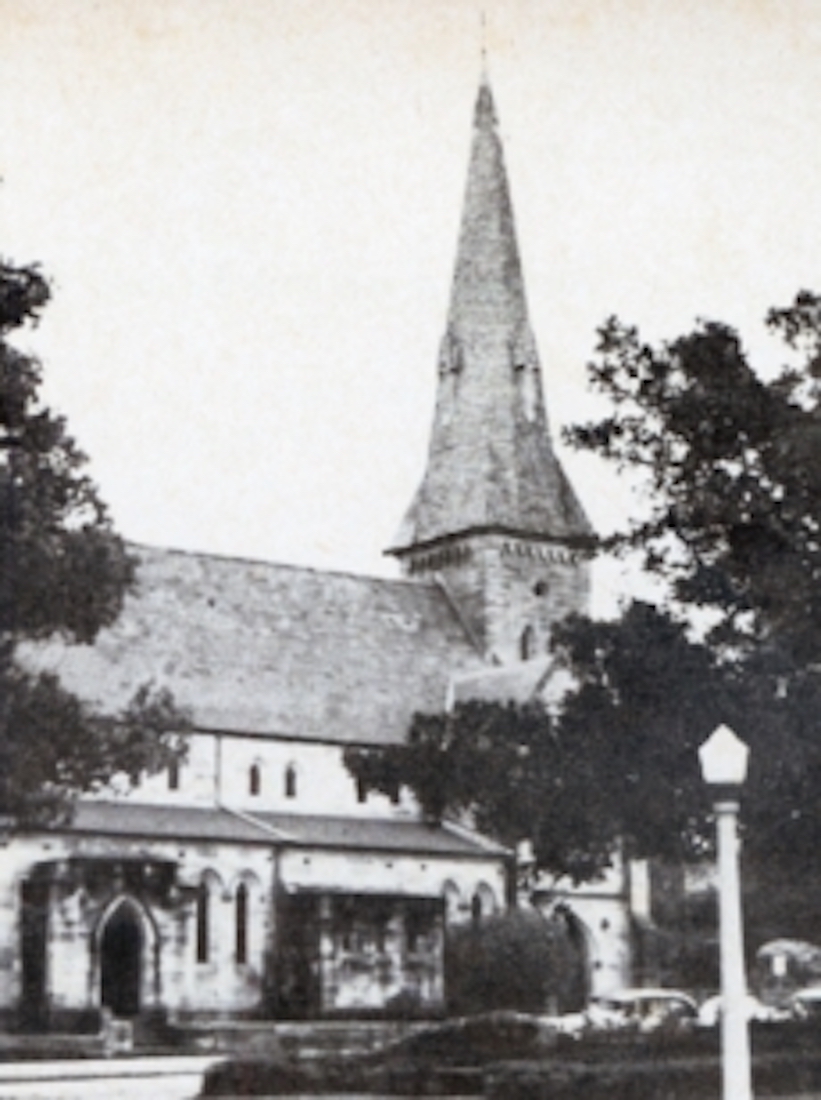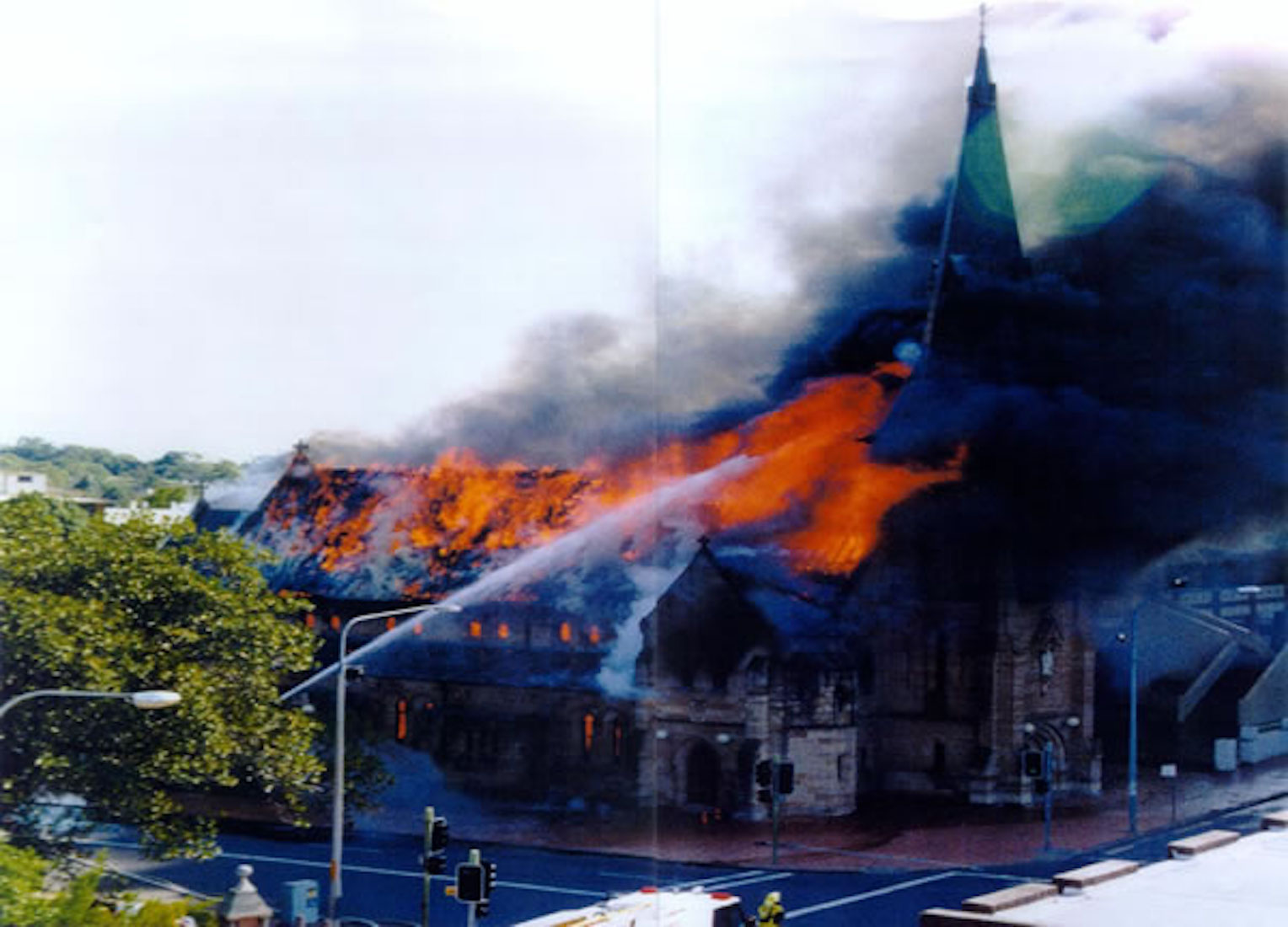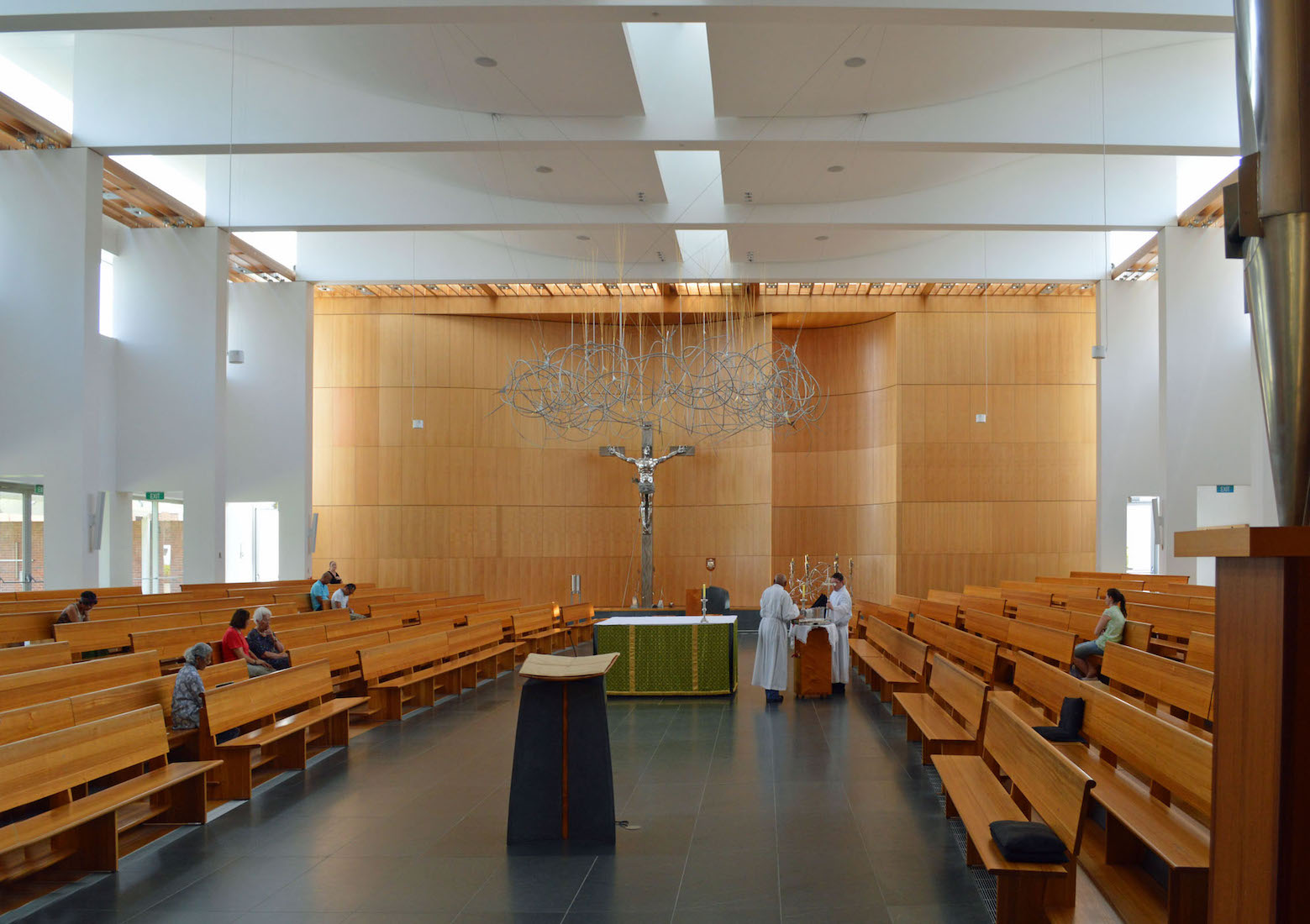
Leaving the Chapel of the Blessed Sacrament, we move through the short link into the Cathedral proper. The nave is stark but light-filled. The delicate curves of the nave roof replace the traditional inverted ‘V’, but still convey the impression of a boat’s hull. The front wall is of warm huon pine. Key features are the large silver Crucifix, a suspended Crown of Thorns(?), the Ambo close to us, from where the Scriptures are read, the Altar beyond, and the large Candelabra against the far wall. PLAN
42. CATHEDRAL ALTAR

The Altar is 2 metres square, 1 metre high, and weighs about 11 tonnes!
43. AUREOLE
A central feature immediately above the Altar, is the Aureole, hanging fron the ceiling. Although often seen as a Crown of Thorns, the design brief noted: ‘The relationship of the Aureole to the Altar is one of unspeakable power through the calling down of the Holy Spirit during the Eucharist prayer when the Spirit penetrates the Host, infuses and transforms the elements ... ’. This is beautifully envisaged by Robin Blau using polished steel rods and gold plated tips, so that it seems alive with light and the Spirit.
44. CRUCIFIX
At the western end of the nave is the Cross with Corpus, also sculpted by Blau, using stainless steel plate and stainless steel sheets. Note the head and expression of Christ; the still taut and strong body muscles of the corpus; the hands and legs. The missing part of the crossbeam brings this all into sharp focus. This is a place to meditate on Jesus’ sacrifice of himself for our salvation.
45. CANDELABRA
Nearby is the Candelabra with its six candle stands. A seventh is added when the Bishop presides at the Eucharist or a liturgical event. The image here is that of the Burning Bush, told in Exodus 3:1–6.
46. CATHEDRA
Near the foot of the Crucifix is this modern but simple Cathedra – the Bishop’s Throne. The Bishop is the primary teacher of the Faith in the Diocese, and the Cathedra reflects this. Above the Cathedra is the crest of the current Bishop, the Right Reverend Anthony Fisher. The arms of the Diocese of Parramatta on the left are super-imposed with the Chi-Rho symbol and crown. At right is the Bishop's personal insignia of a fish, taken from the arms of St John Fisher, English bishop and martyr. The Dominican shield indicaties the Bishop's background as does the flowering cross. The little white cross is of the Order of Malta of which the Bishop is a chaplain.
47. ORGAN
At the rear of the nave is the beautiful Norman and Beard organ, completely rebuilt from a Henry Jones Organ (1864). It was found and rescued from St Saviour’s Church, Knightsbridge, London through the enthusiasm of Fr Peter Williams, a subsequent Dean of St Patrick’s, and other members of the Diocese. It was painstakingly rebuilt by Peter Jewkes and completed in 2005.
48. STATIONS I
Finally, along the northern wall of the Cathedral, we find five long timber panels – a modern version of the 14 Stations of the Cross. Beginning from the right, there are 14 scenes from the Way of the Cross, labelled underneath, and interspersed with Scripture references. We have: • Station I : Last Supper; • Station II : The Garden of Gethsemane; • Station III : Jesus before the Sanhedrin. Relevant Scripture passages are on the panels between.
49. STATIONS II
From the right: • Station IV : Jesus before Pilate; • Station V : Jesus is whipped and crowned with thorns; • Station VI : Jesus carries his Cross.
50. STATIONS III
From the right: • Station VII : Jesus is helped by the Cyrenean; • Station VIII : Jesus speaks to the women at Jerusalem.
51. STATIONS IV
From the right: • Station IX : Jesus is stripped and nailed to the Cross. • • Station X : Jesus and the good Thief. • Station XI : Jesus speaks to Mary and John.
52. STATIONS V
From right to left: • Station XII : Jesus dies upon the Cross. • Station XIII : Jesus is buried. • Station XIV : Jesus rises from the dead. This completes our tour of St Patrick’s Cathedral. Some historic photos follow.
53. CATHEDRAL SKETCH
By 1822 Father J. J. Therry recognized the need for a Church at Parramatta, a subscription list was organized and £109.6s. was raised from the early settlers, mostly ex-convicts who were then respectable farmers. Father Therry’s replacement, Rev Fr Daniel Power, started building the first church in 1827. It was still unroofed in 1835 when Bishop Polding OSB arrived and when finished became a schoolhouse. The Foundation Stone for the first St Patrick’s Church was laid on St Patrick’s Day 1836 and was consecrated ‘with all the pomp and formality of the Romish Church’, in May 1837. [St Patrick’s Cathedral photo]
54. OLD ST PATRICK’S
By 1854 the existing Church was in poor repair and Dean Coffey OFM commissioned a new Church, the Foundation stone of which was laid on August 13th 1854. The tower and spire were not added until the 1880’s. In 1936 a new church was built on the site to meet the needs of a growing congregation. The main body of the church was demolished leaving the tower and spire intact, the stone was cut in half, the windows, corbels and crosses were all reused and a new St Patrick’s emerged looking very similar to the old, but larger overall. [Cathedral Diocese of Parramatta photo] In 1986 St Patrick’s became the Cathedral Church in the new diocese of Parramatta, an area, which stretches in a wedge from Rydalmere to Blackheath.
55. 1996 CATHEDRAL FIRE
In 1986 St Patrick’s became the Cathedral Church in the new diocese of Parramatta, an area, which stretches in a wedge from Rydalmere to Blackheath. On 19th February 1996 this beautiful, though small, cathedral was destroyed by fire – only the stone walls remained. The Bishop at the time, Very Rev Bede Heather, said then ‘a new St Patrick’s will rise from these ashes’, and it has. [St Patrick’s Cathedral photo]
56. AFTER THE FIRE
The loss of the building was greatly felt by the Parramatta Catholic family as it held nearly 200 years of Catholic tradition. The new design was entrusted to MGT Architects from Canberra who worked to ensure that tradition would be respected in the building. Great care was taken to have harmony of the old and new. The old Cathedral is now a Blessed Sacrament Chapel, and adjoining it is the large modern new Cathedral. The new Cathedral was opened in 2003. [St Patrick’s Cathedral photo]
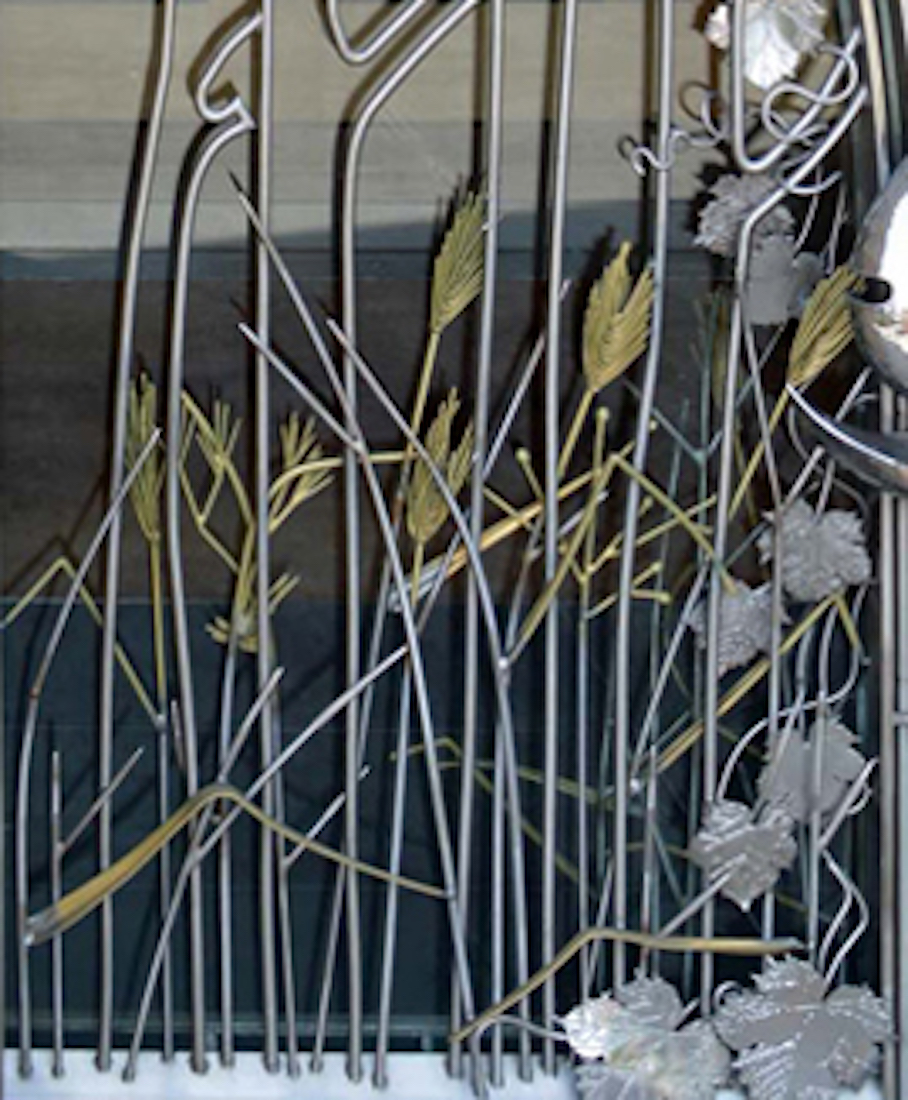
CONCLUSION
St Patrick’s Catholic Cathedral is the most unusual Australian cathedral I have visited. I have been helped by the informative Self-guided Tour put out by the cathedral, and also the Cathedral website. As well, the booklet ‘Welcoming Light: the Windows of St Patrick’s Cathedral, Parramatta’ by Klaus Zimmer has been an invaluable help in understanding the windows of the Chapel.
I am happy to receive comments about this site, particularly relating to typing mistakes or historical errors. The best websites are those which contain no errors! I am grateful to my wife Margie who visited this Cathedral with me, and who has already found a number of typos.
A collection of my photos used on this site can be found at
https://www.flickr.com/photos/paulscottinfo/albums/
Cathedral website:
https://stpatscathedral.com.au/
Site created 12 / 2013 ; revised 03 / 2016 ; reformatted 11 / 2020
Paul Scott

